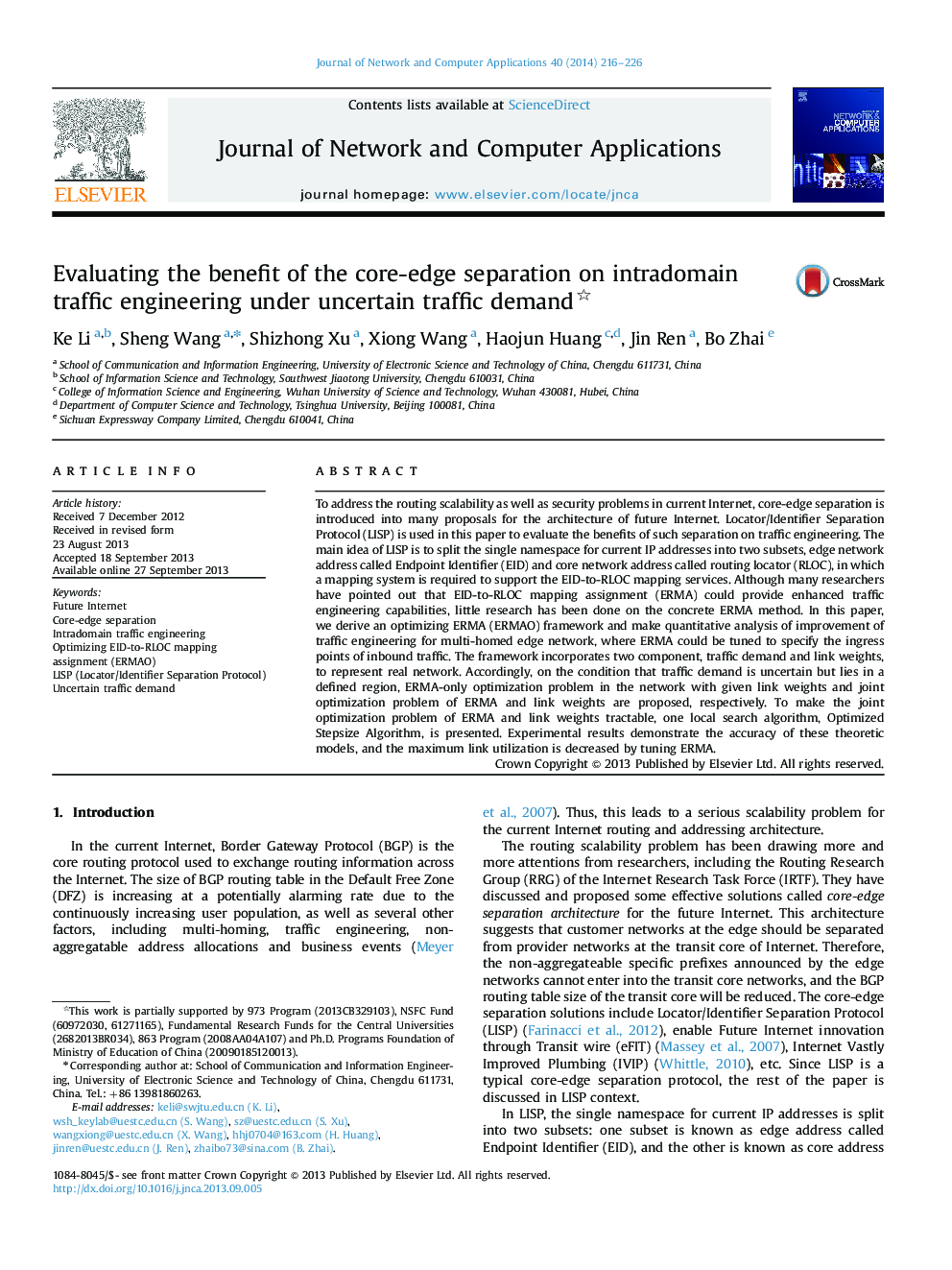| Article ID | Journal | Published Year | Pages | File Type |
|---|---|---|---|---|
| 6885134 | Journal of Network and Computer Applications | 2014 | 11 Pages |
Abstract
To address the routing scalability as well as security problems in current Internet, core-edge separation is introduced into many proposals for the architecture of future Internet. Locator/Identifier Separation Protocol (LISP) is used in this paper to evaluate the benefits of such separation on traffic engineering. The main idea of LISP is to split the single namespace for current IP addresses into two subsets, edge network address called Endpoint Identifier (EID) and core network address called routing locator (RLOC), in which a mapping system is required to support the EID-to-RLOC mapping services. Although many researchers have pointed out that EID-to-RLOC mapping assignment (ERMA) could provide enhanced traffic engineering capabilities, little research has been done on the concrete ERMA method. In this paper, we derive an optimizing ERMA (ERMAO) framework and make quantitative analysis of improvement of traffic engineering for multi-homed edge network, where ERMA could be tuned to specify the ingress points of inbound traffic. The framework incorporates two component, traffic demand and link weights, to represent real network. Accordingly, on the condition that traffic demand is uncertain but lies in a defined region, ERMA-only optimization problem in the network with given link weights and joint optimization problem of ERMA and link weights are proposed, respectively. To make the joint optimization problem of ERMA and link weights tractable, one local search algorithm, Optimized Stepsize Algorithm, is presented. Experimental results demonstrate the accuracy of these theoretic models, and the maximum link utilization is decreased by tuning ERMA.
Keywords
Related Topics
Physical Sciences and Engineering
Computer Science
Computer Networks and Communications
Authors
Ke Li, Sheng Wang, Shizhong Xu, Xiong Wang, Haojun Huang, Jin Ren, Bo Zhai,
